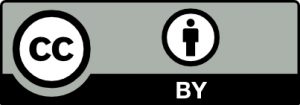4 Are open licenses complicated?
A common myth is that copyright licenses for Open Educational Resources are complicated and difficult to understand. In fact, open licenses often make navigating the terms of use for OER much easier than understanding permissions for more traditional materials.
Creative Commons offers a variety of frequently used examples of open licenses. These ready-made alternatives provide simple, easily recognizable abbreviations and icons that let users know how a work may or may not be used. Authors have a range of options to choose from, depending on their preferences. For instance, you may choose a license that denies permission for users to modify your work or asks that derivatives be shared using your original license terms.
We will talk more about Creative Commons licenses in the workshop.

knowledge check
A form of intellectual property that gives the owner (usually the author) of an original work exclusive rights relating to copying, disseminating and adapting the work. The rights protected by copyright are automatically granted to the copyright holder, whether or not this is stated on the work itself.
A document specifying how a copyrighted work may be used. It grants permissions and states restrictions. Authors may choose to use an open license, which shares permissions typically protected by copyright without transferring ownership of the work.
A nonprofit organization that creates and shares a range of open copyright licenses. Anyone may apply these licenses to their own creative works.

